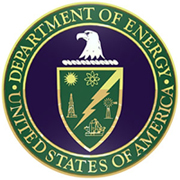
Maria Diaz (Environmental Engineering)
About DOE Fellow
Maria Diaz is a senior undergraduate student pursuing a Bachelor of Science degree in environmental engineering at Florida International University. Her expected graduation date is Fall 2014. Maria’s professional interests include hazardous waste material assessment, soil and groundwater remediation, subsurface particle transport, contaminant assessment in vadose zone and water resources among others. Maria is currently serving as Vice President of the American Academy of Environmental Engineers and Scientist (AAEES) FIU Chapter. She is responsible for the organization of campus-wide events and career enhancing opportunities for the group. She is also an active member for the Water Environment Federation (WEF).
Prior to becoming a DOE Fellow, Maria was a Learning Assistant at the Mastery Lab for Mathematics, a component of FIU’s Project Gateways which provide academic support to help students succeed in several areas such as mathematics, reading and writing. Her tasks in the lab included the implementation of individualized educational techniques as well as peer mentoring activities such as tutoring and leading group learning sessions.
Upon graduation, Maria plans to continue her education in pursuit of master’s degree in environmental engineering and design her graduate thesis around her research at the Applied Research Center.
DOE Related Research and Projects
The reprocessing of irradiated fuel at the U.S. DOE Hanford Site 200 Area in Washington State to obtain plutonium and other useful radioisotopes has resulted in a wide variety of hazardous waste streams that contained chemical and radiological constituents. Uranium leaks from retention basins, trenches, and cribs into the vadose zone created a potential source for groundwater contamination and risk to those who will use these groundwater resources down gradient. Vadose zone contamination of radionuclides requires in situ stabilization to convert U-mobile phases to lower solubility precipitates that are stable in the natural environment. Several experimental strategies have been evaluated specifically to target vadose zone contamination. Working under the supervision of Dr. Yelena Katsenovich, Maria is currently evaluating the potential biological and physical mechanisms which are associated with the fate of ammonia gas after injection into the unsaturated subsurface. Her work is focused on evaluating ammonia (NH3) gas partitioning in the bicarbonate-bearing solutions at different pH and temperature conditions as well as the ammonia adsorption within Hanford soil.
